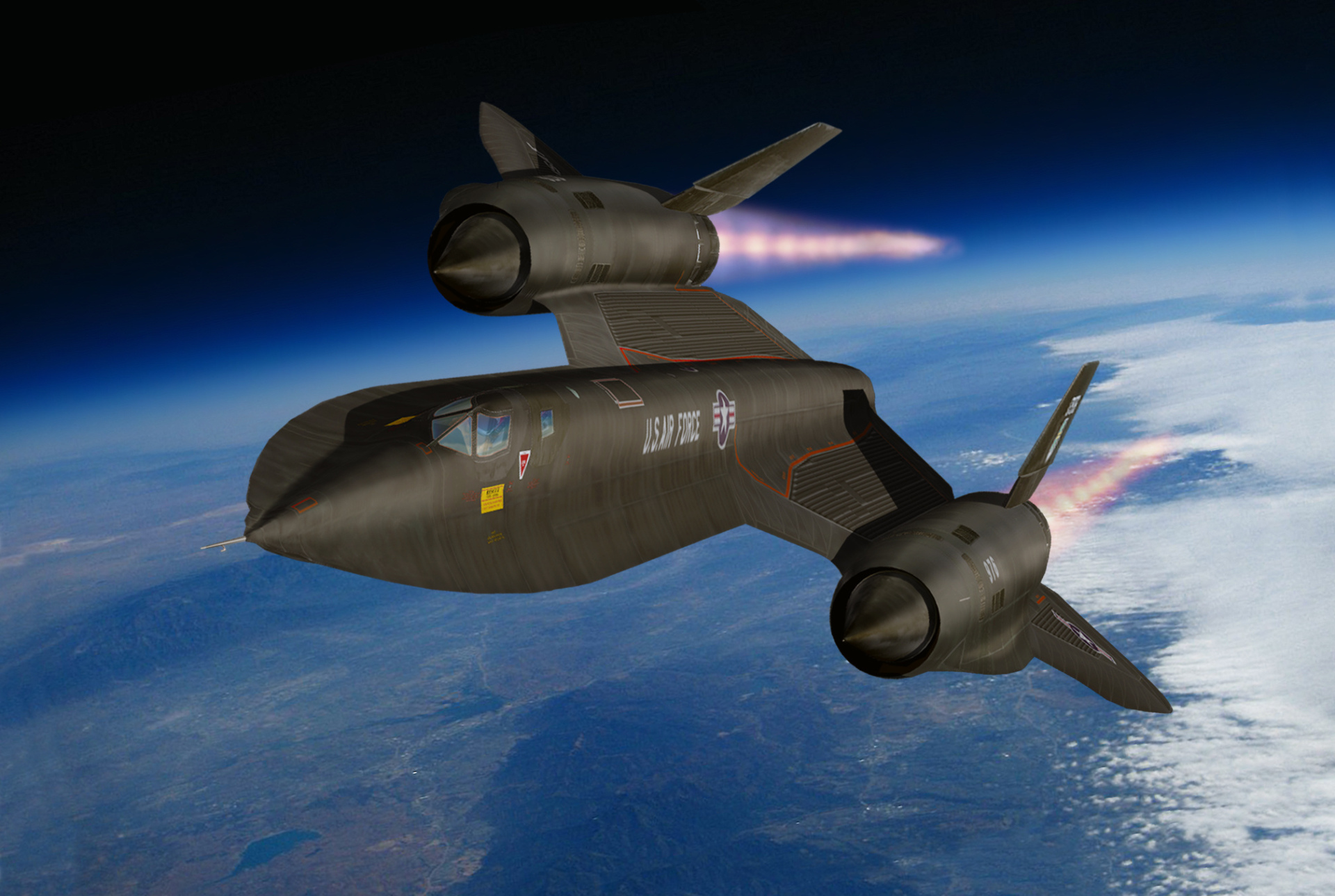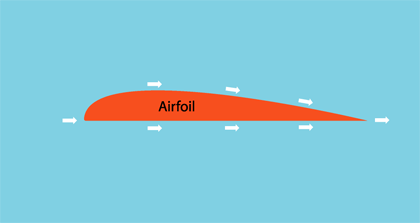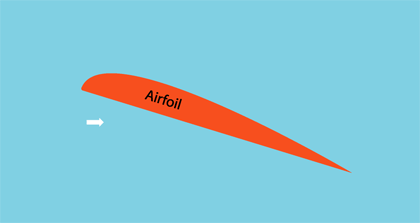The
Physics of Flight

are multiple theories given all over the world wide web, the most talked about is known as the "Longer Path" or
"Equal Transit" theory. The theory involves the unique shape of an airfoil and it also makes use of the principles of
Bernoulli's Law.
 The
theory states that because the shape of the airfoil is
created so that the top part has a longer length
than the bottom part, then the air traveling above the
wing has to move faster than that of below the wing.
This takes into account the principle of Bernoulli's law
that states that faster moving air has less pressure
thereby creating lift that makes the aircraft fly. The
animation to the right shows exactly what the Equal
Transit theory states. Although this theory does give the
right answer to the question on how an aircraft is able to
fly, it explains it in a wrong way. A very concise way of
debunking this theory is by using paper planes. Looking
closely at a paper plane, one can tell that the wings do
not have the fancy airfoil shape that is common in most
planes.
The
theory states that because the shape of the airfoil is
created so that the top part has a longer length
than the bottom part, then the air traveling above the
wing has to move faster than that of below the wing.
This takes into account the principle of Bernoulli's law
that states that faster moving air has less pressure
thereby creating lift that makes the aircraft fly. The
animation to the right shows exactly what the Equal
Transit theory states. Although this theory does give the
right answer to the question on how an aircraft is able to
fly, it explains it in a wrong way. A very concise way of
debunking this theory is by using paper planes. Looking
closely at a paper plane, one can tell that the wings do
not have the fancy airfoil shape that is common in most
planes.
The Correct Explanation: animation from http://www.funpaperairplanes.com/learn_about_flight.html
As an aircraft is gaining speed and is in the process of taking off, the airfoil wing deflects air colliding with it and deflects the air allowing for a differentiation of pressure above and below the wing. So why exactly does this happen? The natural tendency of air is to move in a straight, non obscured line. The shape of the wing however forces it to curve down, the overall volume of air molecules is stretched making the pressure lower. The difference in pressure changes the speed of the air which is the opposite of the Equal Transit theory. It does not matter when the air flow arrives in the same spot, they both just go downward contributing to the downward force that helps the plane generate lift.
Now that we know the basics on how an aircraft flies, we can focus on the stealth capabilities
of the SR-71...
The Physics of Stealth

photo
from
http://www.wallpaperup.com/182261/lockheed_sr-71_military_jet_d.html
As was said multiple
times in this site, the SR-71 Blackbird is an aircraft, but
how exactly does an aircraft fly? Well, there are multiple theories given all over the world wide web, the most talked about is known as the "Longer Path" or
"Equal Transit" theory. The theory involves the unique shape of an airfoil and it also makes use of the principles of
Bernoulli's Law.
animation
from
http://www.funpaperairplanes.com/learn_about_flight.html
Equal
Transit Theory:
 The
theory states that because the shape of the airfoil is
created so that the top part has a longer length
than the bottom part, then the air traveling above the
wing has to move faster than that of below the wing.
This takes into account the principle of Bernoulli's law
that states that faster moving air has less pressure
thereby creating lift that makes the aircraft fly. The
animation to the right shows exactly what the Equal
Transit theory states. Although this theory does give the
right answer to the question on how an aircraft is able to
fly, it explains it in a wrong way. A very concise way of
debunking this theory is by using paper planes. Looking
closely at a paper plane, one can tell that the wings do
not have the fancy airfoil shape that is common in most
planes.
The
theory states that because the shape of the airfoil is
created so that the top part has a longer length
than the bottom part, then the air traveling above the
wing has to move faster than that of below the wing.
This takes into account the principle of Bernoulli's law
that states that faster moving air has less pressure
thereby creating lift that makes the aircraft fly. The
animation to the right shows exactly what the Equal
Transit theory states. Although this theory does give the
right answer to the question on how an aircraft is able to
fly, it explains it in a wrong way. A very concise way of
debunking this theory is by using paper planes. Looking
closely at a paper plane, one can tell that the wings do
not have the fancy airfoil shape that is common in most
planes.
The Correct Explanation: animation from http://www.funpaperairplanes.com/learn_about_flight.html

As an aircraft is gaining speed and is in the process of taking off, the airfoil wing deflects air colliding with it and deflects the air allowing for a differentiation of pressure above and below the wing. So why exactly does this happen? The natural tendency of air is to move in a straight, non obscured line. The shape of the wing however forces it to curve down, the overall volume of air molecules is stretched making the pressure lower. The difference in pressure changes the speed of the air which is the opposite of the Equal Transit theory. It does not matter when the air flow arrives in the same spot, they both just go downward contributing to the downward force that helps the plane generate lift.
Now that we know the basics on how an aircraft flies, we can focus on the stealth capabilities
of the SR-71...
The Physics of Stealth